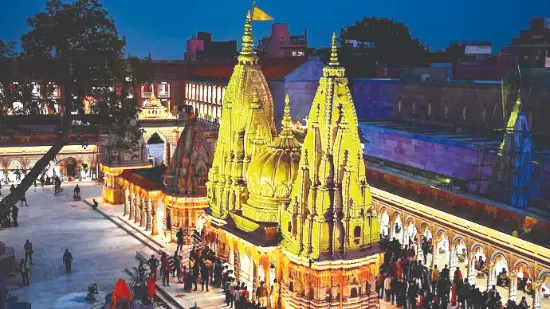Kashi redefines India’s travel map: From pilgrim city to a ‘global tourism magnet’

Varanasi: Varanasi, the world’s oldest living city, is scripting a new chapter in India’s tourism story. No longer just a stop for pilgrims, Kashi has become a year-round global travel destination, drawing record crowds from across India and abroad.
Once synonymous only with spiritual devotion and the Ganga aarti, the city now pulsates with a cosmopolitan energy that blends faith, culture, and modern comfort. Data from the Uttar Pradesh Tourism Department reveal that Varanasi welcomed over 11 crore visitors in 2024, a nearly 19 percent jump from the previous year. What truly stands out is the explosion in foreign arrivals—rising from just 2,566 in 2021 to more than 3 lakh in 2024, a staggering 120-fold increase.
The tourism surge has placed Varanasi among India’s top travel destinations, surpassing even established hotspots like Goa and Shimla. By mid-2025, over 1.88 lakh international travelers had already arrived, signalling another record-breaking year ahead. Domestic tourism, too, has seen an unprecedented boom, leaping from 30.7 lakh visitors in 2021 to nearly 11 crore in 2024.
Uttar Pradesh Tourism minister Jaiveer Singh credits the transformation to a mix of cultural revival and aggressive infrastructure upgrades. “The government’s vision to make Varanasi a global spiritual and cultural capital has turned into reality,” he said. “Together with Ayodhya, Mathura, and Prayagraj, Kashi is now part of a religious tourism circuit attracting visitors throughout the year.”
The ripple effect has been visible across Uttar Pradesh. Ayodhya saw over 16 crore visitors in 2024, driven by the consecration of the Ram Temple, while foreign tourist arrivals across the state jumped from 16 lakh in 2023 to over 22 lakh in 2024, with Varanasi contributing a major share.
Tourism department official Dinesh Kumar noted that the city’s new identity has generated jobs and revived local entrepreneurship. “The redevelopment of the Kashi Vishwanath Dham, coupled with projects in Ayodhya and Vindhyachal, has created a thriving religious tourism circuit,” he said. “With the upcoming Mahakumbh 2025, the momentum will only intensify.”
On the ground, the transformation is evident. The Lal Bahadur Shastri International Airport is undergoing expansion, new hotels and convention centres are coming up, and smart city projects have enhanced cleanliness and safety. Riverfront beautification, efficient traffic systems, and 24-hour surveillance have made the ancient city more tourist-friendly than ever before.
Schemes such as Swadesh Darshan and PRASHAD have played a key role in building sustainable tourism infrastructure, benefiting local artisans, transport operators, and hospitality businesses. Tour operators say Varanasi now attracts visitors year-round, with many exploring nearby sites like Sarnath, Mirzapur, and Chunar, spreading tourism dividends across the region.
Experts believe Varanasi’s success lies in its ability to preserve its sacred essence while embracing global sensibilities. “The world is rediscovering Kashi,” said a senior tourism official. “It is no longer just the city of salvation—it is the soul of India’s living heritage.”



